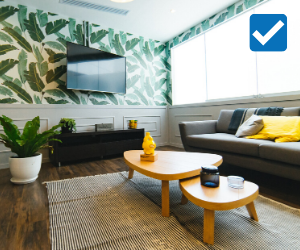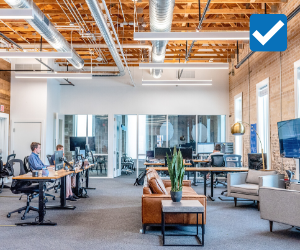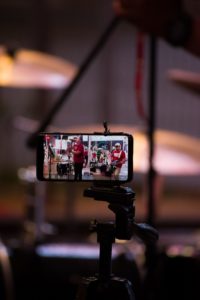It’s 2020 and whilst industry cameras are no doubt the best in the business, technology is looking sharper than ever before, with some of the most recent phone cameras being close to that of a DSLR.
With the world looking a little different this year, thanks to COVID-19, creating professional videos from your phone is a cheaper and easier alternative for many businesses looking for ways to connect with consumers.
The best part is – it’s really not that hard at all. Here are some tricks to get you started!
1. Choose an interesting background
When choosing a background, your first thought may be to find a blank white wall. Whilst this is great for avoiding distracting movements in the background, it doesn’t add much interest to the frame.
What’s better is choosing a background that is rich in depth and colour. For example, your office background, with employees working quietly in the background or a comfy office lounge setting.
It’s also important to choose somewhere that is quiet too. Be aware of birds chirping or conversations happening in the background, as this may distract viewers from your speech. Also, avoid echoey areas that may interfere with your audio.


2. Shoot horizontally
A rule of thumb when shooting most video types is to shoot horizontally. This helps to frame the subject using the rule of thirds and allows you to easily re-adjust the frame in post-production if needed.
To find the grid feature on your phone, you can go to the camera app or settings panel and click allow for ‘grid.’ The location of this feature may vary depending on your phone model.
3. Keep your phone level
If you’ve ever seen a handheld video filmed by a toddler, you can understand the dizziness viewers feel after watching shaky video footage. The best way to avoid this is to keep your phone level by using a tripod. There are many tripods available on the market, with some specially made for smartphones. We include one in our Selfv kit which you access here.

4. Make sure the camera is focussed
There’s nothing worse than spending hours shooting, only to realise in post-production that the lens wasn’t focussed properly. Unfortunately, focusing is one of the things in post-production that can’t quite be fixed in post, so it’s important to double-check this when filming.
5. Ensure your subject is well lit
Lighting is another important factor when filming any video. When thinking about lighting, a key thing to remember is that the light should always be in front of the subject and not behind. To make sure your subject is well lit, external lights can be of major help! This is also available in our Selfv kit.

6. Use a microphone
While the visuals on phone cameras have improved, sound quality is still not great. As sound quality can be the difference between an amateur and professional-looking video, we recommend using an external microphone when recording.
If you are looking to get your video looking that extra bit professional, we highly recommend you use our Selfv kits! They come with all the gear you need to shoot, plus professional editing and support. They are a cheaper alternative to hiring out a full video production agency, yet allows you to still achieve that professional look in your videos.
If you want to see more video tips in action from our head producer, Stephen Bergin, click here to get our free video masterclass sent straight to your inbox.

